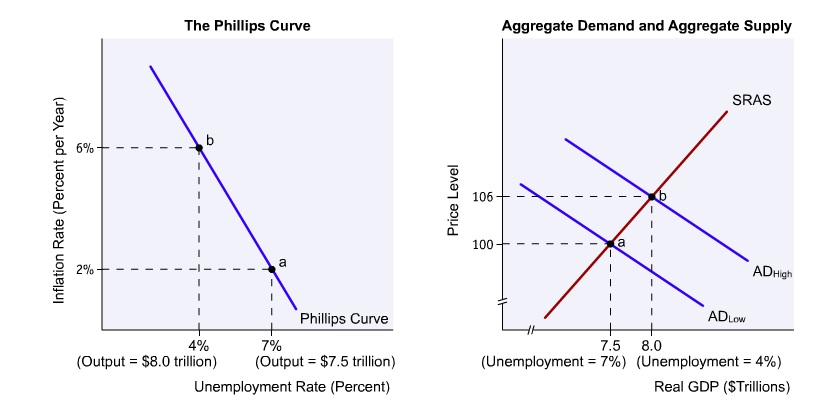How does aggregate demand affect the phillips curve?
1 Answer
The Phillips curve is pretty closely related to aggregate demand - any change in the latter thus has reflections on the former.
The Phillips curve illustrates the inverse relationship between the rate of unemployment and the rate of inflation in a graphical manner. In simpler terms, a lower rate of unemployment (which means more people are without jobs) will correspond to a higher rate of inflation for an economy.
When output is relatively lower, fewer workers get employment thus shooting up the rate of unemployment. When the aggregate demand in an economy shoots up, output increases and GDP in real terms thus shoots up. This brings about two types of changes - a) more people get employed, so the employment rate moves up (or in other words, unemployment comes down) and b) prices rise. This translates into an upward movement along the Phillips curve.
 (Source : http://www.swlearning.com/economics)
(Source : http://www.swlearning.com/economics)
